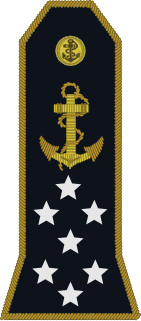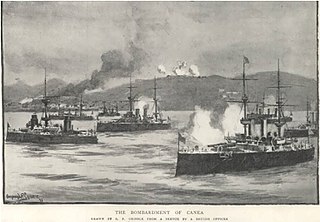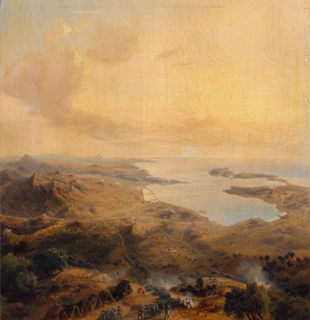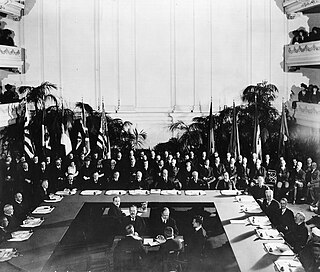 W
WAlthough the history of the French Navy goes back to the Middle Ages, its history can be said to effectively begin with Richelieu under Louis XIII.
 W
WAdmiral of France is a French title of honour. It is the naval equivalent of Marshal of France and was one of the Great Officers of the Crown of France.
 W
WLouis-Émile Bertin was a French naval engineer, one of the foremost of his time, and a proponent of the "Jeune École" philosophy of using light, but powerfully armed warships instead of large battleships.
 W
WThe Commission de Paris was a body of French naval engineers gathered in 1821 to design the future frigates and ships of the line of the French Navy for the post-Empire era. Presided by Jacques-Noël Sané, the Commission comprised Jean-Marguerite Tupinier, Pierre Rolland, Pierre Lair and Jean Lamorinière.
 W
WThe Compagnies Franches de la Marine were an ensemble of autonomous infantry units attached to the French Royal Navy bound to serve both on land and sea. These troupes constituted the principal military force of France capable of intervening in actions and holding garrisons in outre-mer (overseas) from 1690 to 1761. Independent companies of the navy and colonial regulars, were under the authority of the French Minister of Marine, who was also responsible for the French navy, overseas trade, and French colonies.
 W
WIn April 2020, the COVID-19 pandemic reached the French aircraft carrier Charles de Gaulle and the Aeronaval Group of the Naval Action Force, its carrier battle group.
 W
WHenri-Louis Duhamel du Monceau, was a French physician, naval engineer and botanist. The standard author abbreviation Duhamel is used to indicate this person as the author when citing a botanical name.
 W
WThe 1884–1890 French naval mission to Greece was invited to the country by the government of Charilaos Trikoupis to reorganize the Royal Hellenic Navy, in parallel to a military mission for the Hellenic Army. The naval mission, headed by Rear Admiral Laurent Joseph Lejeune, arrived in Greece in December 1884, and remained in the country until 1890.
 W
WThe GIUK gap is an area in the northern Atlantic Ocean that forms a naval choke point. Its name is an acronym for Greenland, Iceland, and the United Kingdom, the gap being the open ocean between these three landmasses. The term is typically used in relation to military topics. The area has been considered strategically important since the beginning of the 20th century.
 W
WThe Hudson Bay expedition of Jean-François de Galaup, comte de La Pérouse was a series of military raids on the lucrative fur trading posts and fortifications of the Hudson's Bay Company on the shores of Hudson Bay by a squadron of the French Royal Navy. Setting sail from Cap-Français in 1782, the expedition was part of a global naval war between France and Great Britain during the American Revolutionary War.
 W
WThe International Squadron was a naval squadron formed in early 1897 by a number of Great Powers just before the outbreak of the Greco-Turkish War of 1897 to intervene in a native Greek rebellion on Crete against rule by the Ottoman Empire. Warships from Austria-Hungary, France, the German Empire, Italy, the Russian Empire, and the United Kingdom made up the squadron, which operated in Cretan waters from February 1897 to December 1898.
 W
WThe London Naval Treaty was an agreement between Great Britain, Japan, France, Italy and the United States, signed on 22 April 1930. Seeking to address a loophole in the formidable 1922 Washington Naval Treaty, it regulated submarine warfare and limited naval shipbuilding. Ratifications were exchanged in London on 27 October 1930, and the treaty went into effect on the same day. It was largely ineffective.
 W
WFrench Marines in Canada, 1683–1715 considers the Troupes de la marine in Canada, but not in other parts of New France, such as Acadia, Plaisance, and Île-Royale, during the period 1683–1715. The Marines were first sent to Canada in 1683 after an upsurge of Iroquois hostilities. The basic unit of the Marines in Canada was the company, with three or four officers, two sergeants, four corporals and lance-corporals, and a total complement of 33 to 52 officers and other ranks. The number of marines during the period peaked in 1688 with a total strength of 1,750 officers and other ranks. The other ranks were recruited in France, and were mostly volunteers, although Canada was not an attractive place to serve in. Unskilled labourers dominated and almost a third of them came from the western parts of France. On the other hand, the officer corps was the subject of a gradual process of canadianization, with about a third of the officers serving in 1715 born in Canada.
 W
WThe naval war on Lake Constance was a series of conflicts that took place on Lake Constance, beginning in 1632, in the context of the Thirty Years' War. At that time various powers ruled different parts of the shoreline: in the north and east was Roman Catholic, Habsburg Anterior Austria; in the northwest and west the troops of the Protestant Duchy of Württemberg with their allies from Kingdom of Sweden and Kingdom of France. These various powers sought, for strategic reasons, to exercise their hegemony over the area of Lake Constance. Only the partly Catholic and partly Protestant southern shore which belonged to the Old Swiss Confederacy maintained an uneasy neutrality due to their divided loyalties.
 W
WThe Capture of the Rosily Squadron, also known as the Battle of Poza de Santa Isabel, took place on 14 June 1808, in Cadiz, Spain, during the uprising against the French invaders. Five French ships of the line and a frigate were in the port, having remained there under blockade since the Battle of Trafalgar nearly three years earlier. After an engagement with the Spanish lasting five days, French Admiral François Étienne de Rosily-Mesros surrendered his entire squadron with the four thousand seamen then on board.
 W
WThe Battle of Saint Cast was a military engagement during the Seven Years' War on the French coast between British naval and land expeditionary forces and French coastal defence forces. Fought on 11 September 1758, it was won by the French.
 W
WThe scuttling of the French fleet at Toulon was orchestrated by Vichy France on 27 November 1942 to prevent Nazi German forces from taking it over. The Allied invasion of North Africa had provoked the Germans into invading the zone libre, neutral according to the Armistice of 1940. The Vichy Secretary of the Navy, Admiral François Darlan, defected to the Allies, who were gaining increasing support from servicemen and civilians. His replacement, Admiral Gabriel Auphan, guessed correctly that the Germans were aiming to seize the large fleet at Toulon, and ordered them to be scuttled.
 W
WThe Second London Naval Treaty was an international treaty signed as a result of the Second London Naval Disarmament Conference held in London, the United Kingdom. The conference started on 9 December, 1935 and treaty was signed by the participating nations on 25 March, 1936.
 W
WThe fate of the French fleet at the Siege of Toulon marked one of the earliest significant operations by the British Royal Navy during the French Revolutionary Wars. In August 1793, five months after the National Convention declared war on Great Britain, thus drawing Britain into the ongoing War of the First Coalition, the government of the French Mediterranean city of Toulon rose up against the Republican national government in favour of the Royalist faction. Toulon was the principal French naval port on the Mediterranean and almost the entirety of the French Mediterranean Fleet was anchored in the harbour. After negotiations the British commander in the Mediterranean, Admiral Lord Hood, the city's Royalists seized control and British forces, alongside allies from Spain, Naples and Sardinia entered the city, seizing the fleet and preparing defences against the inevitable Republican counterattack.
 W
WA treaty battleship was a battleship built in the 1920s or 1930s under the terms of one of a number of international treaties governing warship construction. Many of these ships played an active role in the Second World War, but few survived long after it.
 W
WThe Trianon model collection is a set of high-quality ship models ordered by Napoléon for documentary purposes.
 W
WThe Washington Naval Treaty, also known as the Five-Power Treaty, was a treaty signed during 1922 among the major nations that had won World War I, which agreed to prevent an arms race by limiting naval construction. It was negotiated at the Washington Naval Conference, held in Washington, D.C., from November 1921 to February 1922, and it was signed by the governments of Great Britain, the United States, France, Italy, and Japan. It limited the construction of battleships, battlecruisers and aircraft carriers by the signatories. The numbers of other categories of warships, including cruisers, destroyers and submarines, were not limited by the treaty, but those ships were limited to 10,000 tons displacement each.
 W
W